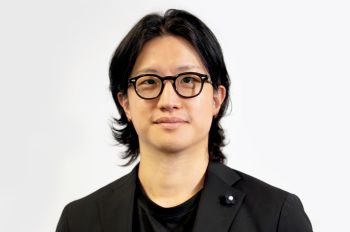Novel Medical Solutions Named Winner of BME Senior Design Contest
The Biomedical Engineering (BME) department at Armour College of Engineering hosted the annual presentation of Capstone Design Projects at the end of the Spring 2016 semester. Seven teams of BME undergraduate students presented the medical devices they designed and built for their senior design course. The Novel Medical Solutions team earned the top spot at the competition for their improved design for a vitrectomy cannula.
The yearlong course consists of two semester-long courses: BME 419 - Introduction to Design Concepts in Biomedical Engineering and BME 420: Design Concepts in Biomedical Engineering. Both classes are supported by a grant through the National Institutes of Health (NIH). Associate Professors of Biomedical Engineering, Jennifer Kang-Mieler and Derek Kamper, advised the students. The teams also had expert mentors in the field to offer feedback and advice on their projects.
Teams participating in the class were required to submit their projects to national competitions in addition to the BME departments contest. All teams submitted their projects to the Design by Biomedical Undergraduate Teams (DEBUT) Challenge. Judging for the competition is ongoing and winners will be announced in late August. The BioSolutions team also presented their work at the LIMBS Summit Design Competition, a contest to design low-cost prosthetic or orthotic technologies for developing countries. Although the group did not win at LIMBS, they received great feedback from the judges.
2016 BME DESIGN TEAMS
Novel Medical Solutions (NMS)
Team: Clare Dorin (BME ‘16), Tim Irle (BME ‘16), Jacob Lehman (BME ‘16), Gregory Rupp (BME ‘16), and Daniel Sprys (BME ‘16).
Mentor: Dr. William F. Mieler, Cless Family Professor and Vice-Chairman; Director Residency and Vitreoretinal Fellowship Training; Department of Ophthalmology & Visual Sciences at University of Illinois at Chicago
The group won the 2016 BME Design Contest by developing an improved design for a cannula device used for surgeries of the eye called the NMS Portal. The device, a vitrectomy cannula, acts as a valve during surgery so that surgeons may operate without losing pressure within the eye.
Cannulas currently employed by surgeons have two major design flaws– they typically leak and are not compatible with certain soft-tip tools. Leaking is often the result of the cannulas bicuspid valve design. The leaflets of these valves bend dramatically when a tool is inserted. This bending creates fatigue on the valve and can cause the fluid of the eye to leak. The valve’s leaflets must also be strong enough to resist the pressure of the eye in order to stop leakage. In current cannulas, the valve can be too rigid and will not allow for the use of soft-tip tools. This increases the risk of tool-caused trauma to the retina during surgery.
The NMS team sought to mitigate these shortcomings and develop an improved device design. Their cannula implements a three leaflet pyramidal shaped valve made of silicone to allow the easy insertion of instruments while maintaining a tight seal. They also raised the height of the overcap of the cannula to act as a guide for soft tip instruments in order to reduce tip deflection.
The next steps the team will take to improve their design, is to construct the valve out of a self-healing hydrogel to reduce any chance of leakage due to fatigue on the valve.
OptiMECS
Team: Rachel Affenit (BME, 4th year), Nicole Frantz (BME ‘16), Alejandra Rodriguez (BME ‘16), Joseph Valio Jr. (BME ‘16), Vanya Yorgova (BME ‘16)
Mentor: Dr. Yi Pang, Professor of Optometry and Assistant Dean for Research at Illinois College of Optometry
OptiMECS placed second in the BME Design Contest. They developed the OptiCT software to automatically determine choroidal thickness from an Optical Coherence Tomography (OCT) image produced by any OCT machine. The team’s algorithm will allow researchers and clinicians to accurately analyze a large number of images in order to diagnose many ocular or retinal diseases.
Bio-VACA
Team: Austin Boos (BME ‘16), Omar Alhaj Ibrahim (BME, 4th year), Vesna Naumovski (BME, 5th year), April Wanagas (BME, 5th year), and Conner Wiebell (BME ‘16)
Mentor: Georgia Papavasiliou, Associate Professor of Biomedical Engineering at Armour College of Engineering
Placing third in the BME Design Contest, the team designed Quantiflow, a process to test drug delivery systems in vitro, under conditions similar to the human body. The Quantiflow system consists of a drug delivery system, a flow chamber, and imaging collection and analysis modality. The transparent flow chamber allows for fluorescent imaging to take place. A custom MATLAB program then outputs the retention of the nanoparticles over time, allowing researchers to analyze the drug system’s efficacy.
BioSolutions
Team: Isabel Arias (BME ‘16), Szu-Chun Chen (BME ‘16, MAS ChE ’16), Carlos Ochoa (BME ‘16, MAS ChE ’16), Elliot Osorio (BME ‘16, MAS ChE ’16), and Parth Patel (BME, 4th year)
Mentor: Dr. Jennifer Kang-Mieler and Dr. Derek Kamper
In order to provide better-fitting prosthetics to amputees worldwide, the BioSolutions team created a system that scans and creates a model of a patient’s residual limb and the socket design. Their device then analyzes the socket model and modifies it to distribute the load across the socket. Finally a computer model will simulate the socket and residual limb to ensure the most comfortable fit.
DIGITech
Team: Janik Alcala (BME ‘16), Andreea Beca (BME, 5th year), Devin Ellis (BME ‘16), Kevin Kleczka (BME, 4th year), Andrew Lam (BME ‘16), and Zeshan Musharraf (BME ‘16)
Mentor: Dr. Jennifer Kang-Mieler and Dr. Derek Kamper
The team worked to develop DIGITrack, a therapeutic glove that tracks the finger movement of a stroke patient during therapy sessions. The glove transmits joint angles to a therapist and stores them on a computer allowing a patient's progress to be tracked over time. The glove can also be paired with a virtual reality game to help keep a patient engaged during therapy. The portable device also allows a patient to undergo therapy in their home.
SurgicalPro-S
Team: Veronica Ibarra (BME/CHE, 5th year), Harja Sattar (BME ‘16), Katerina Stojkova (BME, 5th year), Adriane Walther (BME ‘16), and Junxiao Yu (BME ‘16)
Mentor: Dr. Michael Ujiki, Director of Simulation Laboratory Northshore University Health System
SplenectoPro was developed by the team to provide a realistic surgical training device in order to reduce the number of errors that occur during rare surgeries. The device mimics the anatomy of the abdominal cavity including a realistic spleen and pancreas, flowing blood, and connective tissue. A laparoscopic device augmented by a sensor provides tactile feedback to the surgeon, telling them if they are applying too much or too little pressure.
LapTrain
Team: Ritika Dhawan (BME ‘16), Syeda Fatima (BME ‘16), Shima Homayoonieh (BME ‘16), Jasmine Kwemo (BME ‘16), and Sandra Tobias (BME, 4th year)
Mentor: Dr. Megan Applewhite, Endocrine Surgery Fellow at University of Chicago and Northshore University Health System
Adrenalectomies are rare and require surgeons to practice in order to perfect. LapTrain designed the AndrenalSims to provide an adrenalectomy simulator that is as realistic to the human body as possible. The two separate simulators replicate the removal of both the right and left adrenal glands with realistic organs and connective tissues. The device’s cost-effective modular design allows it to be rebuilt and reused.




